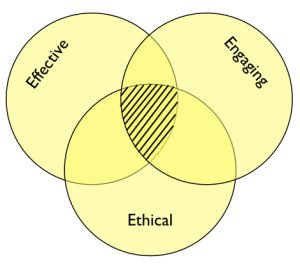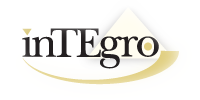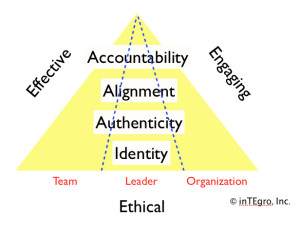You read the headline right; I do mean “Loon culture” (not “loony;” that’s for another time!)
A recent trek into Minnesota’s Boundary Waters Canoe Area (BWCA) provided the inspiration for this month’s newsletter. Among my favorite experiences in the BWCA are the sightings and sounds of Minnesota’s state bird, the Common Loon, (although there is hardly anything “common” about Loons.) I was reminded this trip of how the presence of Loons signals a clean and healthy lake. Clean and healthy lakes mean abundant fish, and for Loons, it’ all about the fish; every 12 weeks a family of four Loons can consume about 15 tons! They frequent lakes with abundant fish and clear water where they can see their prey. I got to thinking, if the presence of Loons signals a clean, healthy and desirable lake, what are signs that we should watch for of a desirable organizational culture?
I’m not sure how a Loon’s brain works, but there’s a simple logic there somewhere connecting “clean lake,” healthy lake” and “more fish.” What’s the simple logic that you follow to determine the quality of an organization’s culture? After a few decades in this business, I’ve learned to look for three things:
- Engagement – Is this an organization that attracts and retains talent, and where people are proud to work? Are they committed to the work and sufficiently engaged to invest extra effort?
- Ethics – Do they not only comply with laws and regulations, but also treat customers, employees and all stakeholders fairly and respectfully?
- Effectiveness – Are they executing sound strategies, achieving their goals, growing and sustainable?
What I’ve come to call “triple-E cultures” – effective, engaging and ethical – are where most of us want to spend our working lives. Increasingly, “triple-E” organizations are also where we prefer to do business; there is a growing interest in where are clothes and food come from, things like “carbon footprints” and treatment of workers in the supply chain. Especially in more competitive markets, talent and customers alike will “fly over” those organizations that do not exhibit triple-E characteristics.
There are common factors contributing to most clean and healthy lakes, including primarily a lack of pollutants or invasive species, sufficient oxygen, nutrient balance and biodiversity. Each of these needs to be present, and they interact to maintain quality lakes with a sustainable fish population. Likewise, I’ve observed four sets of practices that are common to organizational effectiveness, engagement and ethical culturesdistinguish triple-E cultures; here are brief descriptions for these components of triple-E cultures and a few questions to gauge each:
IDENTITY – They know who they are, what they stand for and where they are going.
- Are the organization’s purpose, principles and priorities clear?
- Is the organization aware of its limitations, and is it capitalizing on its strengths?
AUTHENTICITY – They are real.
- Is the organization true to its purpose, principles and priorities; does it “walk its talk?”
- Does it cultivate truth-telling and transparency?
- Does it acknowledge and address external and internal threats and opportunities?
ALIGNMENT – They are cohesive and unified.
- Are strategy, structure, systems and personnel practices aligned with purpose, principles and priorities?
- Are differences leveraged? Is there unity with diversity?
- How adaptable is the organization? Does it invest in research and increase the capacities of its human resources?
ACCOUNTABILITY – They fulfill their promises and are good community citizens.
- Does it collect and use measures that matter?
- Do members exercise responsibility?
- Is the organization a good steward of its resources and reputation?
I hope that this serves as a useful guide for leaders of organizations who want to cultivate triple-E cultures. It may also be useful for those conducting due diligence about the health of organizational cultures they are considering affiliating with or that they are questioning.
inTEgro offers an Organizational Integrity Survey that systematically gathers feedback from organizational members to determine strengths and gaps relative to these four key dimensions of triple-E cultures. Please visit http://integro-inc.com/what-we-offer/survey-products/ to access a sample report, and contact inTEgro if you would like more information.
Fortunately there is growing interest in preserving or restoring clean healthy lakes; that will make the Loons happy. We all need to focus on what we can do to cultivate triple-E cultures; that will make talented workers, organizations’ leaders and their key stakeholders happy.
Ten worst foods for prostate health The Culprits Behind Prostate Health Concerns: Uncover the foods that can harm your prostate and overall well-being. Learn about the Ten Worst Foods for Prostate Health to steer clear of potential health risks.
If the jitters or late-night insomnia from coffee have been bothering you, exploring Coffee Alternatives for Wakefulness might be a good idea. From herbal teas to energizing smoothies, there are plenty of ways to start your day on the right foot without relying on caffeine. https://bluegrassentclinic.com/coffee-alternatives-for-wakefulness/






